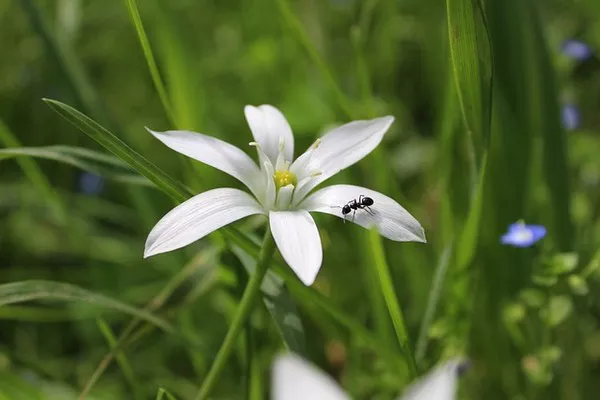In recent years, there has been growing concern over the decline in bee and butterfly populations worldwide. These vital pollinators play a crucial role in ecosystems, agriculture, and biodiversity. As gardeners, landscapers, and environmental stewards, we have a responsibility to support these essential creatures by providing them with suitable habitats and food sources. One effective way to do this is by selecting and cultivating plants that are particularly attractive to bees and butterflies. In this article, we will explore some of the best plants to incorporate into your garden to support these pollinators and promote biodiversity.
Understanding the Importance of Bees and Butterflies
Before delving into the specific plants that attract bees and butterflies, it’s essential to understand why these creatures are so crucial to our ecosystems. Bees, including honeybees, bumblebees, and solitary bees, are responsible for pollinating a significant portion of the world’s food crops and wild plants. Without bees, many fruits, vegetables, and other crops would not be able to reproduce, leading to food shortages and ecosystem imbalances.
Butterflies, while not as prolific as bees in pollination, also play a vital role in ecosystem health. They are important pollinators for various wildflowers and contribute to the reproductive success of many plant species. Additionally, butterflies serve as indicators of environmental health, with their presence or absence reflecting changes in habitat quality and biodiversity.
By supporting bee and butterfly populations, we can help ensure the health and resilience of our ecosystems while enjoying the beauty and diversity they bring to our outdoor spaces.
Selecting Plants for Bees and Butterflies
When choosing plants to attract bees and butterflies, it’s essential to consider a few key factors. First, opt for native plant species whenever possible. Native plants have evolved alongside local pollinators and are well-suited to their needs. They provide familiar sources of nectar, pollen, and habitat, making them highly attractive to bees and butterflies.
Secondly, prioritize plants with long blooming periods. Bees and butterflies rely on a steady supply of nectar and pollen throughout the growing season to sustain themselves and their colonies. Selecting plants that bloom from early spring to late fall ensures that pollinators have access to food sources throughout the year.
Finally, aim for a diverse selection of plants with different shapes, colors, and flowering times. This diversity not only provides a varied diet for bees and butterflies but also creates a visually appealing landscape. By incorporating a mix of flowers, shrubs, and trees, you can attract a wide range of pollinators and support biodiversity in your garden.
Top Plants for Bees and Butterflies
1. Lavender (Lavandula spp.): Known for its fragrant purple blooms, lavender is a favorite of both bees and butterflies. Its abundant nectar attracts a variety of pollinators, while its aromatic foliage provides shelter for insects.
2. Echinacea (Echinacea spp.): Also known as coneflower, echinacea produces daisy-like flowers that are highly attractive to bees and butterflies. Its nectar-rich blooms come in a range of colors, including pink, purple, and white.
3. Milkweed (Asclepias spp.): As the primary host plant for monarch butterflies, milkweed is essential for their survival. Its vibrant flowers provide nectar for adult butterflies, while its leaves serve as food for caterpillars.
4. Bee Balm (Monarda spp.): With its showy clusters of tubular flowers, bee balm is a magnet for bees, butterflies, and hummingbirds. Its long blooming period and aromatic foliage make it a valuable addition to any pollinator garden.
5. Salvia (Salvia spp.): Salvia, or sage, is prized for its ornamental value and its attractiveness to pollinators. Its tall spikes of flowers come in various shades of blue, purple, pink, and red, providing a valuable food source for bees and butterflies.
6. Sunflowers (Helianthus spp.): Sunflowers are not only a cheerful addition to the garden but also a favorite of bees and butterflies. Their large, showy blooms produce abundant pollen and nectar, attracting pollinators throughout the summer months.
7. Butterfly Bush (Buddleja spp.): True to its name, butterfly bush is highly attractive to butterflies, including monarchs, swallowtails, and painted ladies. Its fragrant flowers come in a range of colors and bloom from summer to fall.
8. Liatris (Liatris spp.): Also known as blazing star or gayfeather, liatris produces tall spikes of purple flowers that are irresistible to bees and butterflies. Its late summer bloom time provides a valuable food source when other plants may be waning.
9. Goldenrod (Solidago spp.): Despite its reputation as a weed, goldenrod is a valuable source of late-season nectar for bees and butterflies. Its bright yellow flowers provide a burst of color in the fall garden while supporting pollinator populations.
10. Joe Pye Weed (Eutrochium spp.): This native perennial is a favorite of butterflies, including monarchs and swallowtails. Its large, domed flower clusters attract a wide range of pollinators and add vertical interest to the landscape.
Conclusion
By incorporating these and other pollinator-friendly plants into your garden, you can create a vibrant and biodiverse ecosystem that supports bees, butterflies, and other essential pollinators. Not only will you be contributing to the health of the environment, but you’ll also enjoy the beauty and tranquility of a garden alive with buzzing bees and fluttering butterflies. Together, we can make a difference in conserving these vital creatures for generations to come.


